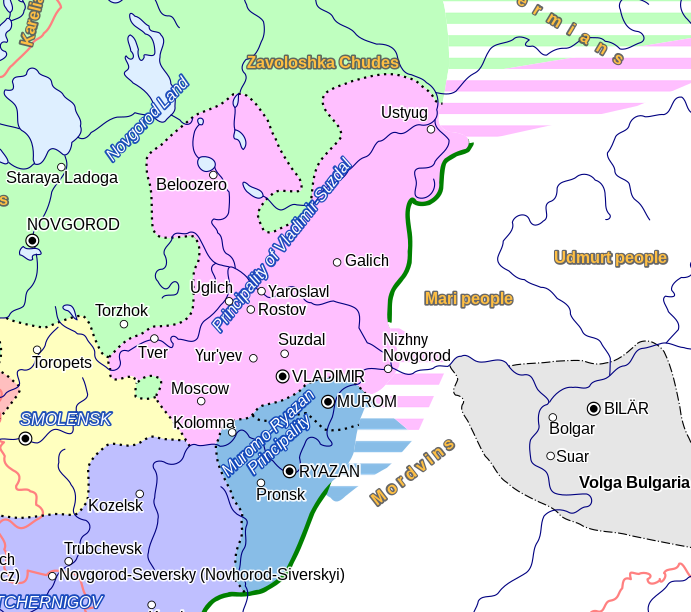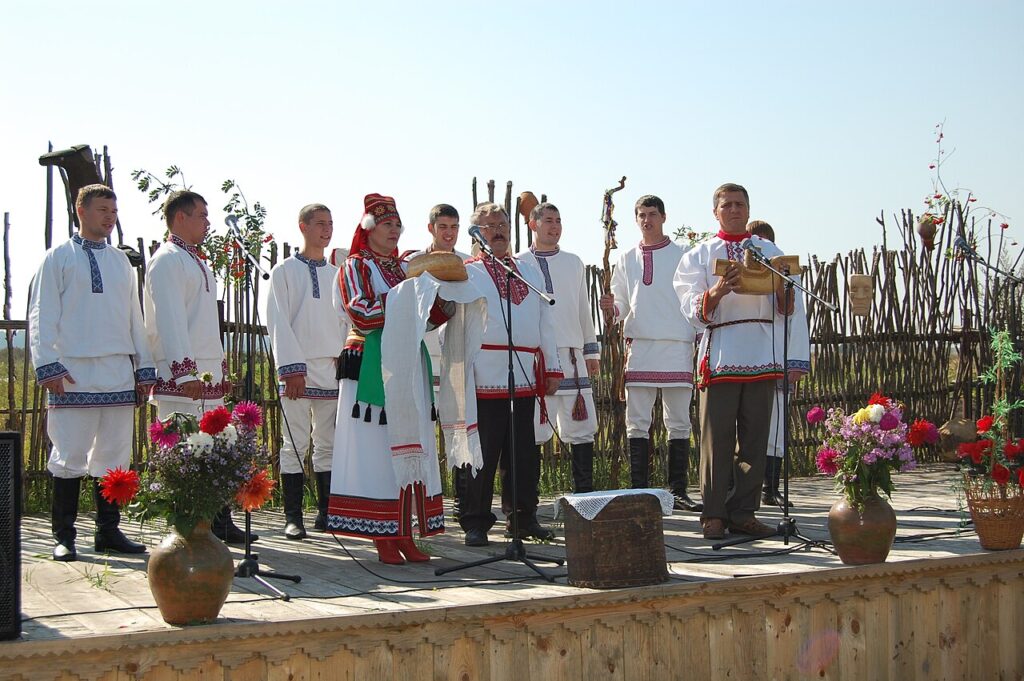When someone thinks of Slavic people, Russians are probably the first group that comes to mind. Given the fact that they are the most populous Slavic-speaking ethnicity by a wide margin and the one with the greatest visibility in history and politics, this is hardly surprising. Therefore, it might be shocking for some to find out that (a lot of) Russians are actually not that Slavic, at least from an ancestral standpoint. Yet, this is what genetic studies are revealing.
“Slav” is the name for people who speak Slavic languages, which are part of the Indo-European branch of languages. Slavic languages can further be divided into western, southern, and eastern branches. Polish, Serbo-Croatian, and Russian are the best-known examples of western, southern, and eastern Slavic languages, respectively. The spread of these languages began with large-scale migrations out of a Slavic homeland in east-central Europe in all directions: west, north, east, and south. As the Slavs settled new areas, they assimilated local people from Germanic, Baltic, Romance, and Finnic speaking tribes.
The kingdom of Kievan Rus’ is ancestral to the three East Slavic nations of Ukraine, Belarus, and Russia. Prior to the Mongol invasion, Kievan Rus’ had already been disintegrating into a number of principalities. One of these was Vladimir-Suzdal, named after its two capitals. The area had originally been home to a number of native Finno-Ugric speaking tribes who became assimilated into the East Slavic speaking culture. Finno-Ugric languages are part of the broader Uralic grouping; speakers are scattered throughout Europe and western Siberia. Languages include Finnish, Estonian, Hungarian, Saami, Karelian, Khanty, Mansi, and Udmurt among others.

Today, there are still a handful of Finno-Ugric speaking groups such as Mordvins, Erzya, and Moksha to the east of Moscow but they are vastly outnumbered by Russian speakers. The previously widespread pre-Slavic tribes of the Volga-Oka region such as Meschera and Merya disappeared along with their languages, but a recent genetic study indicates that their legacy substantially lives on in the Russians, validating historical accounts that point to a cultural assimilation of the autochthonous tribes as opposed to a full replacement.
R1a is a common Y-DNA haplogroup in Eurasia and especially Eastern Europe, but different clades can indicate different origins. Researchers from the aforementioned study analyzed ancient remains from Vladimir-Suzdal, modern Russians from Ryazan to the southeast of Moscow, and modern Finnic speakers of the region to show that a number of R1a clades can be assigned to the pre-Slavic substrate. Amazingly, 48% of Russian R1a carriers from Ryazan have clades that seem to be of pre-Slavic origin, as do 40% of Mordovian Finns do.

Since R1a accounts for 56% of the Y-DNA of Ryzan Russians, this means that about a quarter of male lineages from that region may be assigned to pre-Slavic origins. However, this study did not explore other Y-DNA haplogroups or mtDNA (maternal) haplogroups, so the total amount of pre-Slavic ancestry among the studied Russian-speakers in the study is likely to be far greater than just one quarter. Additionally, the samples are from Ryazan which is not that far from Moscow; heading further east towards the Urals, it’s probable that the proportion increases even further. And looking to the north, we already know that a substantial amount of ancestry in the Russian Arctic regions is Baltic and Finnic. In fact, the Uralic affinity in the Russians of the far north is actually greater than in people from Finland!
So while definitely Slavic from a cultural and linguistic standpoint, a lot of the ancestry among a broad swathe of Russians is actually derived from an autochthonous pre-Slavic substrate, as is the case with Slavs in the Balkans. Still, the pre-Slavic tribes that occupied the area to the east of Moscow were mostly Eastern European in origin despite speaking Finnic languages, having descended from waves of migration from the Baltic area. This fundamentally Eastern European substrate is why ethnic Russians from places like Ryazan and Yaroslavl tend to cluster with western Russians as well as Ukrainians and Belarusians anyway despite not being as heavily Slavic.
Russia as a country is mostly located in Asia, but ironically it was within the geographic boundaries of Europe that the original Russian people admixed with non-Slavs. Additionally, this non-Slavic admixture is mostly of Finnic and Baltic origin rather than anything to do with Mongols or Tatars as is often claimed in popular tropes.
References
Adamov, D., Shlykov, A., Potanina, A., Voronina, M., Gorin, I., Ponomarev, G., Kabaev, D., Chernyaeva, L., Gavrilov, A., Rusakov, D., Pocheshkhova, E., Zhur, K., Prokhortchouk, E., Goncharova, N., & Balanovska, E. (2025). Pre-Slavic and Slavic Interaction at Eastern Periphery of Slavic Expansion in Northeastern Europe (Y-Gene Pools of Volga-Oka Region). Genes, 16(10), 1149. https://doi.org/10.3390/genes16101149